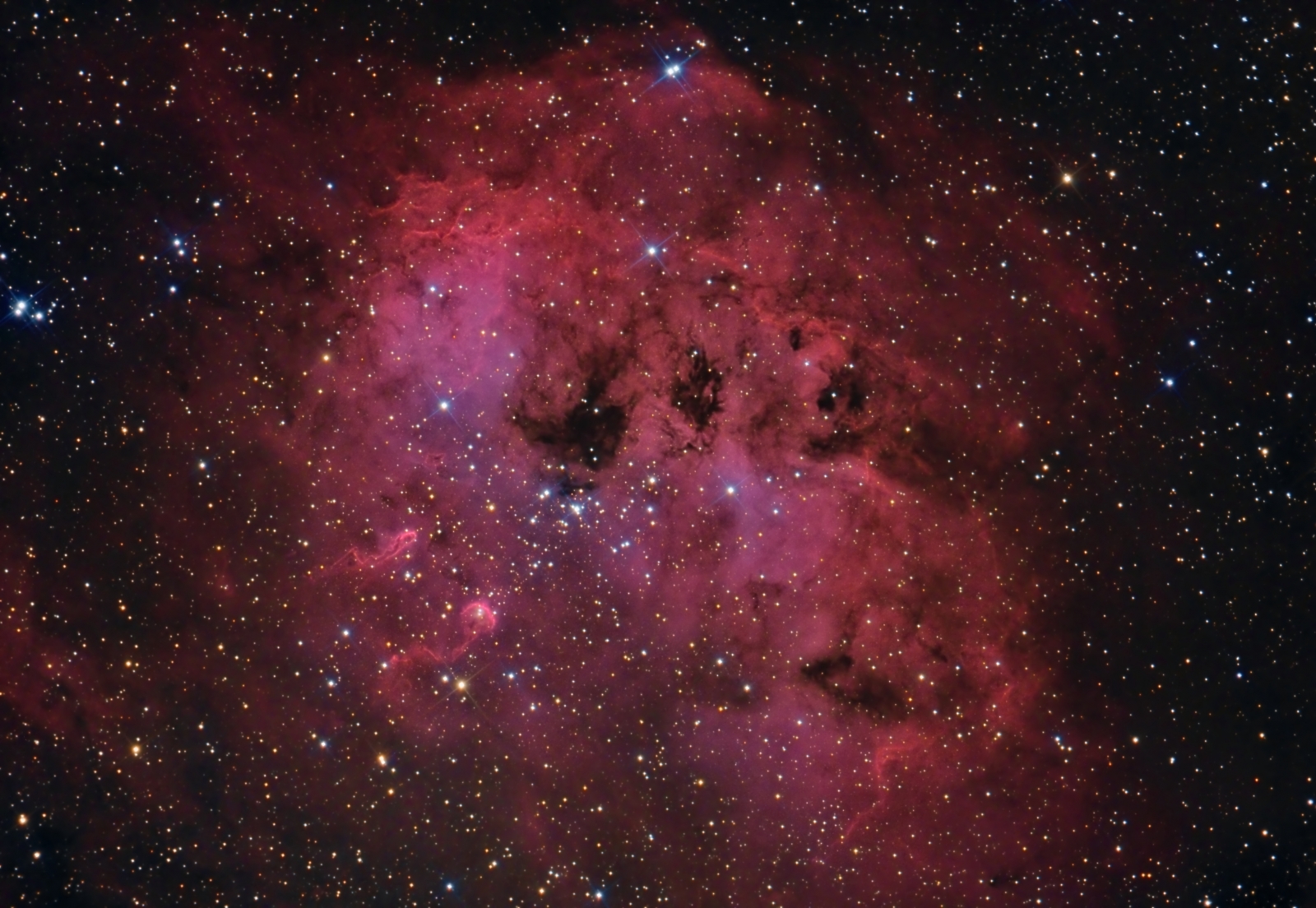IC410 Emission Nebula
Click image for full size version
December 26, 2015
IC410 is a dim, glowing patch of hydrogen gas about 100 light years across and 12,000 light years away in the direction of Cassiopeia. The star cluster NGC1893 is in the centre of the nebula. The “tadpoles” at lower left of the nebula are about 10 light years long. New stars may be forming in these structures. The dark patches in the nebula occur where dust obscures the glowing gas.
Warren Keller (http://www.billionsandbillions.com/) and I collaborated to make this image. My colour data was combined with Warren’s H-alpha data, and we processed in PixInsight to make the result posted here. Warren and I have a couple of projects on the go, including developing a 2-day workshop together, which we will deliver at AstroCATS 2016, in London, ON next May.
Tekkies:
Colour data acquired with 250 mm ASA reflector operating at f/6.8 and SBIG STL-11000 camera. H-alpha data acquired with OGS/RCOS 10″ R-C and Atik 11000M. All pre- and postprocessing with PixInsight.
6x10m R, 6x10m G, 6x10m B, 24x30m Ha (total 15hr).
Warren and I each produced versions of the image using our typical workflows in PixInsight. A couple of the images we produced were blended for the final result. Warren did a little more of the colour tuning, and I did more of the creation and blending of the synthetic Luminance.
Resolution is approximately 0.8 arcsecond per pixel.







Hi Ron,
Very interesting outcome. The contrast and detail are impressive for moonlit conditions.What does a comparison with ‘standard’ HaRGB show?
Regards,
Mark
This result is far, far superior than the HaRGB (which looked nice!). The synthetic L was much less noisy than the colour data, and could handle much more involved processing (deconvolution, linear histogram equalization etc.).
Clear skies,
Ron